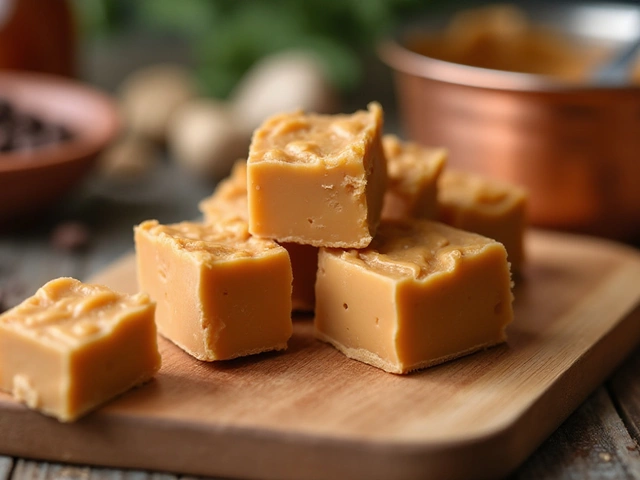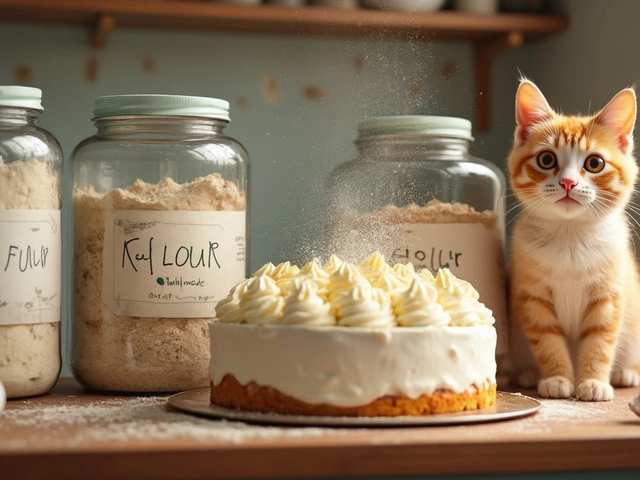Toffee Fudge: Easy Recipes, Tips & Tricks
Got a sweet tooth and love that buttery, caramel‑like flavor? Toffee fudge is the perfect treat – rich, chewy, and downright addictive. Whether you’re a total beginner or have made fudge a few times, the basics are simple. Grab a pot, some sugar, butter, and a pinch of patience, and you’ll have a batch ready to share (or keep all to yourself).
Quick Guide to Perfect Toffee Fudge
First up, the temperature matters. Aim for the soft‑ball stage – that’s about 235‑240°F (113‑115°C). Using a candy thermometer saves a lot of guesswork, but if you don’t have one, you can do the cold‑water test: drop a small bit of the mix into ice water; it should form a soft ball you can roll between your fingers.
Start by melting butter in a heavy‑bottomed saucepan. Add brown sugar, white sugar, and a splash of milk or cream. Stir constantly – you don’t want the sugar to scorch. Once it’s bubbling nicely, bring it up to the target temperature. When it hits, remove the pot immediately; the extra heat will keep the fudge from over‑cooking.
Now comes the fun part: beating. Let the mixture cool to about 110°F (43°C) – you’ll feel it’s warm, not hot. Then whisk vigorously for 3‑5 minutes until it thickens and loses its shiny look. This step creates that smooth, velvety texture we all love.
Fold in chopped toffee bits, a pinch of sea salt, or even a dash of vanilla if you like. Transfer the mixture into a lined 8×8‑inch pan, smooth the top, and let it set at room temperature. No refrigeration needed unless you’re in a hot kitchen.
Fix Common Fudge Problems Fast
Grainy fudge? Most likely the sugar crystalized because the mixture was boiled too long or the temperature overshot. If this happens, melt the fudge again gently, add a tablespoon of butter, and stir until smooth before cooling again.
Too hard or crumbly? That means you went past the soft‑ball stage. Lower the heat next time and pull the pot off the burner the moment the thermometer reads the right range. You can rescue a batch by adding a splash of milk and reheating just until it’s smooth.
Stuck in the pot? If your fudge refuses to set, keep whisking a bit longer while it cools; sometimes it needs extra agitation to reach that perfect consistency.
For a glossy finish, brush the top with a thin layer of melted chocolate once the fudge has set. It adds a nice visual touch and an extra flavor layer without changing the core recipe.
Finally, store your toffee fudge in an airtight container at room temperature. It’ll stay soft for up to two weeks. If you need to keep it longer, a quick freeze works – just let it thaw on the counter before serving.
Now you’ve got the basics, the pitfalls, and the quick fixes to make toffee fudge that impresses. Go ahead, cut a big square, share it with friends, or keep it all to yourself. Either way, you’ll have a sweet, buttery treat that’s worth every bite.

Rescue Your Fudge: Transform Toffee-Like Fudge Without Condensed Milk
When your fudge turns out too much like toffee, fear not—with a few tricks, you can bring it back on track without using condensed milk. Understanding the science of sugar and the importance of precise cooking temperatures can aid in the rescue mission. Adjusting ingredients like butter, cream, or milk can help restore the desired creamy texture. The article guides you through the steps to successfully transform your toffee-like fudge into a delectable treat, offering practical tips and insights.
View More




